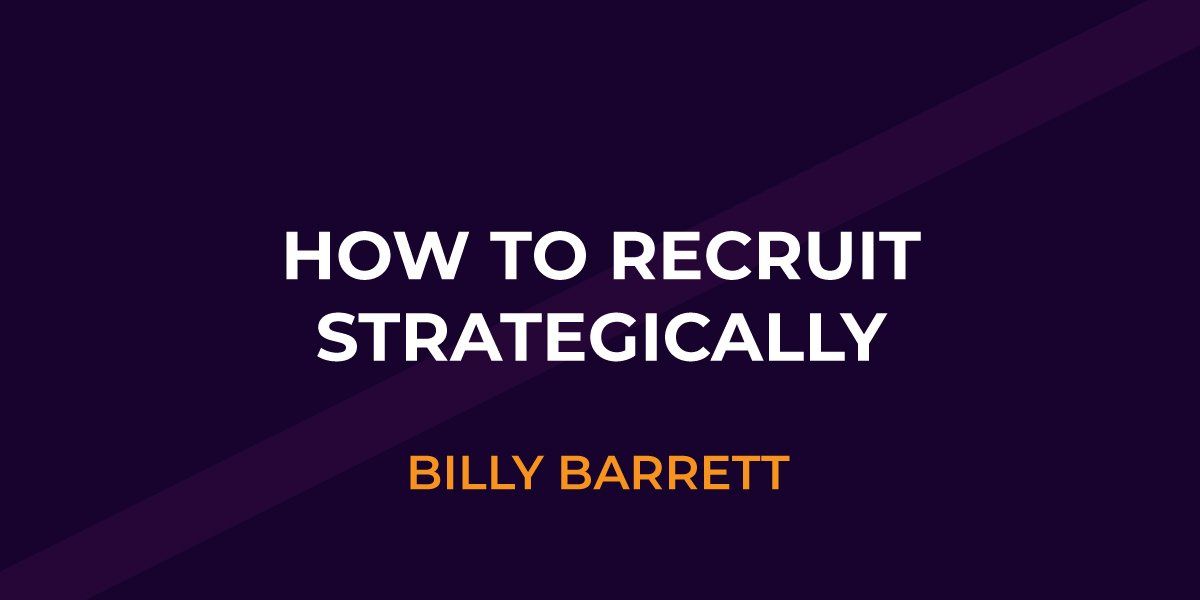How to Recruit Strategically
By Billy Barrett
In 2017, the Human Capital Institute conducted a study , Developing Sustainable Strategic HR , which found that a staggering 90% of HR leaders are aware that their recruiting strategies are insufficient. Companies can have all of the technological enhancements in the world, but the people they employ are the single biggest factor in their success. Employees also account for the majority of most organizations’ budgets, so it is critical to know how recruiting can make the most of new talent potential.
Strategic Conversations
Everyone thinks their job is vitally important. With that in mind, recruiters need to establish exactly which open positions are the most important to the company. For example, if you are an advertising agency and you are looking to hire a new creative team to work with a client, you should probably look at hiring the person who will manage the team first. Alwaysfill the rightrole first ─ the one that will lead to the success of upcoming initiatives and the rest of the team.
Leverage Your Data
Data is the heartbeat of modern business. Until recently, the recruiting industry wasn’t fully leveraging it. We have all experienced traditional recruiting methods, where HR relies upon a few recruiters who are swimming in CVs and résumés to address their openings.
Big data is a gold-mine for consultants and HR departments alike. Think about how much data potential employees put onto the Internet and how their employer tracks their progress and results while they are at work. If you have access to this data and harness it effectively, it offers all of the insight that you need to establish whether a candidate has the skills required to fill your role. Data analysis saves time and increases the likelihood that recruiters will fill openings with the righttalent.
Build Up A Roster
A hiring plan is essential to running an efficient recruiting process ─ and it needs to be forward-thinking. Recruiters can be proactive and pragmatic in their processes by sourcing and nurturing talent ahead of time so that the organization has a warm pipeline of potential talent when the C-Suite is ready to hire.
An excellent way to build up a roster of talent is through employee referrals. To make the recruiting process more efficient, recruiters should also add internal candidates to the list. Staff who already excel within your organization are likely hungry to learn new skills, and they already know your infrastructure inside and out. Don’t forget to consider them when looking for talent.
Get Hiring Managed Involved Fast
Organizations that are already strategically managing their recruiting pipeline usually have hiring managers working to identify talent from the very start of the process. It stands to reason that status and rank tend to get different responses depending on where you are in the hierarchy. If a hiring manager leads the outreach stage for potential talent, a candidate is much more likely to respond than if they receive a message from a standard recruiter.
The primary focus of the C-Suite is usually on sales and revenue ─ after all, they drive measurable success. That said, a recruiting strategy needs to be of equal importance, because, without the right talent, the successful production and maintenance of products and services will quickly drop and sales will dry up. Hiring plans should be considered a critical component of overall business strategy, and if a shortcoming is recognized by HR or hiring managers, it should be resolved as quickly as possible.




